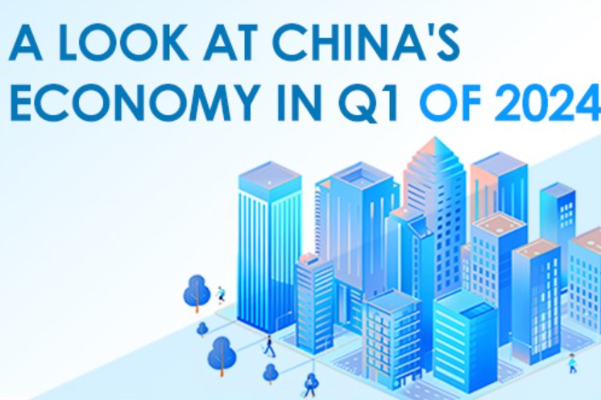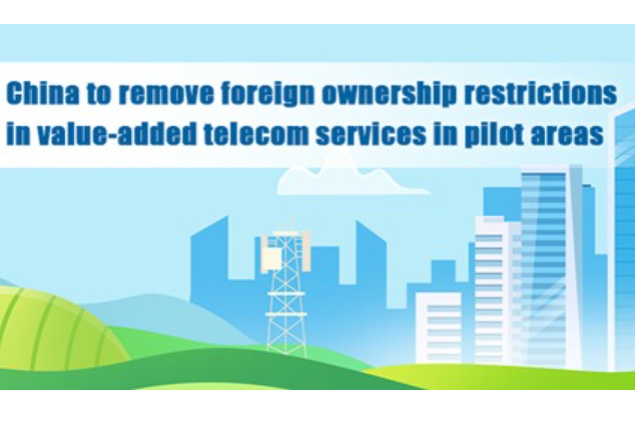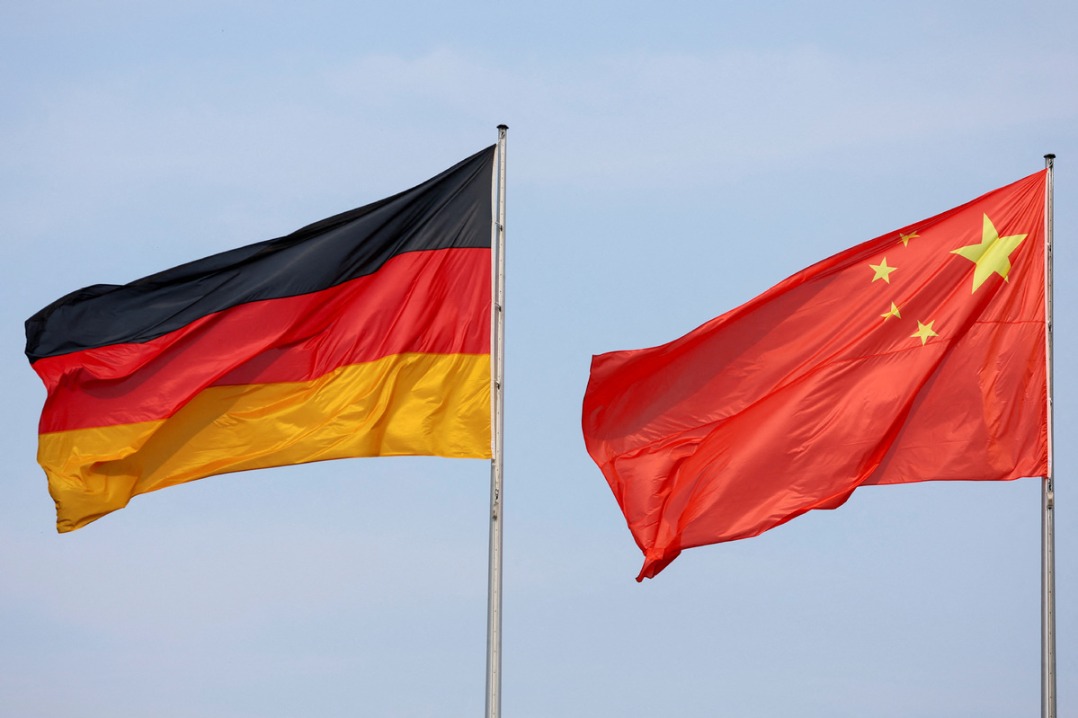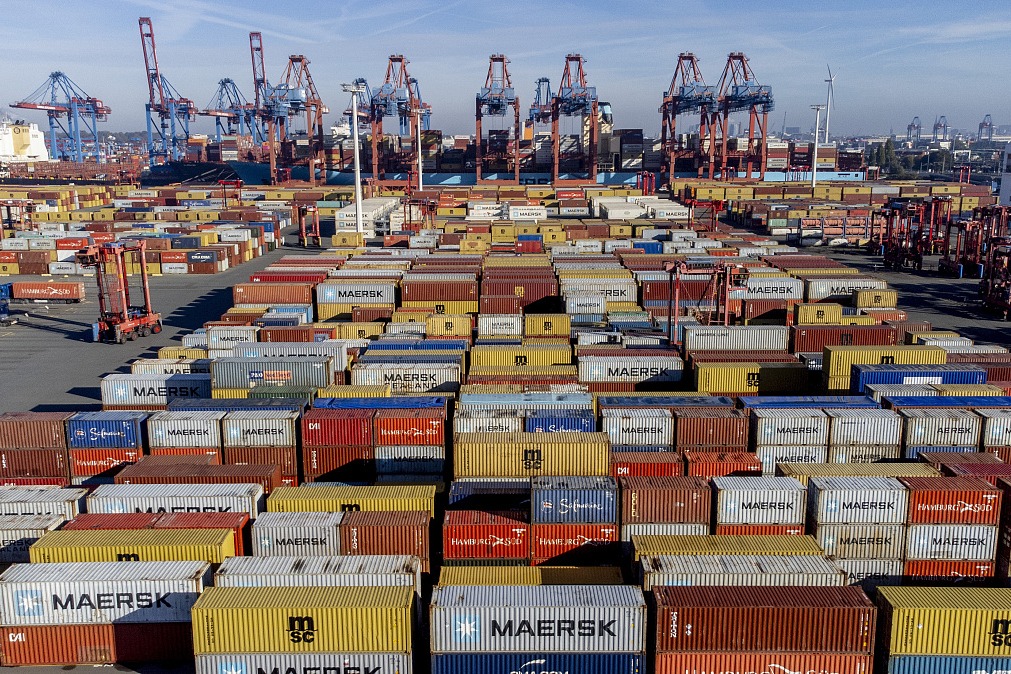Nantong prospers as Shanghai's northern gate

Prefecture-level city's government lures business and investment from the doorstep of China's foremost financial center
The Nantong government hosted a conference in Shanghai on April 26, seeking to attract new business and investment to the prefecture-level city in Jiangsu province.
Located on the northern bank of the Yangtze River near where it empties into the Yellow Sea, Nantong is seeking to dovetail its development with the regional integration of the Yangtze River Delta.
The government said it welcomes entrepreneurs and investors to take advantages of the opportunities in Nantong. More than 1,000 entrepreneurs, officials and scholars from across the Yangtze River Delta attended the event.
At the closing of the conference, the Nantong government signed 39 cooperation agreements covering investment, technology and industrial development, the last of which totaled 73 billion yuan ($11.46 billion).
Two years ago, the Jiangsu provincial authorities asked Nantong to build itself into the north gate of Shanghai. Since then the city has accelerated its construction of a high-speed railway link and highways to connect with those from Shanghai.
Nantong has also taken active part in cooperating with Shanghai's Chongming Island in creating what it calls a "world-class ecological island". The city has earmarked an area of 150 square kilometers along the riverside, facing Chongming Island, as an ecological preservation belt.
Fei Gaoyun, vice-governor of Jiangsu, said he hoped Nantong would take the opportunity to expand its cooperation with Shanghai, and that in turn Shanghai can support the development of Nantong. He added that Nantong can provide a broad space for Shanghai to relocate its noncore urban functions.
Song Yijia, deputy secretary general of the Shanghai municipal government, said that Shanghai's development must be based on the help and support of the other cities in the Yangtze River Delta, and that the coordinated development of and connectivity between Shanghai and Nantong looks set to embrace new opportunities with joint efforts by the two sides.
In his keynote speech at the conference, Nantong Party Chief Lu Zhipeng said the regional integration development strategy of the Yangtze River Delta prompts Nantong, a city where the strategies of developing the Yangtze River Delta and the Yangtze River Economic Belt overlap with each other, to cooperate with Shanghai.
He added that Nantong welcomes all projects so long as they meet the requirements of the central government's industrial policies and the needs of the city's industrial planning.
Nantong has a strong pro-innovation atmosphere and provides platforms for professionals to realize their dreams.
The city also has a solid industrial base and many industrial parks and platforms awaiting high-quality projects, Lu said.
A well-developed sea-land-air transportation network and efficient interconnection with neighboring cities, plus a good business environment and infrastructures are the result of hard work and government effort in the city, Lu added.
Nantong is one of the most desirable cities for businesses in China. With a population of 7.64 million, the city has 166 kilometers' of riverbank along the Yangtze to its south and a 206-km coastline facing the Yellow Sea to its east. It is located 100 km away from downtown Shanghai.
The city was the cradle of China's national industries during the late Qing Dynasty (1644-1911). Located at the crossroads of Wu, Yue and Hui cultures, throughout history Nantong has produced a number of famous entrepreneurs and scholars.
The city is the hometown to 47 academicians of the Chinese Academy of Sciences and the Chinese Academy of Engineering, and seven Olympic gold medalists.
Last year, Nantong's gross domestic product hit 774 billion yuan, ranking 18th among all Chinese cities. Its GDP is expected to hit one trillion yuan next year.
According to Lu, more than 50 percent of enterprises in Nantong have cooperative ties with Shanghai, 60 percent of commodities the city consumes and produces are imported or exported through the Port of Shanghai, and 70 percent of Nantong's agricultural produce is supplied to Shanghai.
Shanghai Party Chief Li Qiang said, while meeting with a government and Party delegation from Nantong, that the city has much space to accept spillover industries from Shanghai, and he urged Nantong to make better use of its advantages in land, port and talents.
Lou Qinjian, Party chief of Jiangsu, said Nantong is in a period of strategic opportunity, and has huge development potential with its momentum for growth.
Lou encouraged Nantong to pursue high-quality development by upgrading its industry, deepening its reform and opening-up and improving infrastructure and social welfare.
City of development
The annual production value of the advanced manufacturing industry in Nantong hit 1.5 trillion yuan in 2017. The city's shipbuilding accounts for 10 percent of the national total, and its ocean engineering equipment industry occupies about one third of the national total.
The annual revenue of Nantong's home textile industry accounts for about half of all production in China.
To boost growth in other areas, the government has established a 10 billion yuan fund for the development of next-generation information technology and advanced intelligent terminals and chips, large-scale integrated circuits and new types of electron components.
Nantong has also founded Jiangsu's first transaction platform for industrial stock assets, which can serve as channels for the merging, asset reorganization and technology transfers among enterprises.
The service sector contributes half of Nantong's economic growth.
The city has seven provincial-level service industry nesting zones and 52 city-level zones, which are ready to accommodate all kinds of modern service projects.
Nantong is a competitive city in service outsourcing, in forms of information technology, business and knowledge process outsourcing.
The city is a national modern agricultural demonstration zone, with nearly 333,000 hectares of high-standard farmland, 60 modern agricultural demonstration parks and 30 agricultural produce processing zones.
MOST POPULAR
- 1 Things to know about China Intl Consumer Products Expo 2024
- 2 China tops FDI confidence index of emerging markets
- 3 China specifies steps to improve payment services in tourist attractions
- 4 Low-altitude economy set to take off
- 5 China's immigration service platform receives over 10m calls from home, abroad
Editors' Picks
 Infographic:
A look at China's economy in Q1 of 2024
Infographic:
A look at China's economy in Q1 of 2024
 Infographic:
China to remove foreign ownership restrictions in value-added telecom services in pilot areas
Infographic:
China to remove foreign ownership restrictions in value-added telecom services in pilot areas
 Infographic:
2023 Sino-German investment and trade in numbers
Infographic:
2023 Sino-German investment and trade in numbers
 Infographic:
China-Germany relations in graphic
Infographic:
China-Germany relations in graphic



